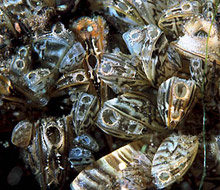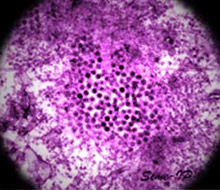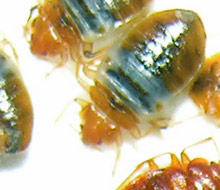Know Your Invasive Critters
|
QUAKER PARROT Myiopsitta monachus Also known as: Quaker Parakeet, Monk Parakeet Native home: Argentina Came to U.S.: Through Kennedy airport Threat: Utility companies say the birds' huge nests can threaten electricity transmission and even lead to blackouts. Government action: In New York, Con Ed has tried to dismantle nests and has discussed building platforms to entice the birds away from power lines. Other states, though, have adopted more draconian measures. |
|
COMMON REED Phragmites australis Native home: North America How it got here: The opportunistic reed has spread everywhere. While degradation of wetlands gets much of the blame, some scientists believe a hardier strain of the plant, native to Europe, may be adding to the problem. Threat: Crowds out other plants, depriving birds of plants needed for feeeding and nesting. Government action: The city has a plan to reduce some nitrogen discharges into marshes. Many environmentalists believe the city must adopt other measures to protect its wetlands from phragmites and other threats. |
|
ZEBRA MUSSEL Dreissena polymorpha Native home: Russia and European waterways How it got here: Commercial fishing boats and cargo ships transfer foreign species like the zebra mussel to new waters by dumping contaminated ballast water. Threat: In addition to making some native species nearly extinct, zebra mussels colonies can be so dense that they clog intake pipes at water and power plants. They have also contaminated the water at treatment facilities. Some argue, though, they aren't all bad, because they consume bacteria and decrease water contamination. Government action: As of Sept. 30, thanks to a lawsuit brought by New York and several other states against the Environmental Protection Agency, it will be illegal for ships to dump untreated ballast water. A bill regulating the cleanliness of ballast water is stalled in the U.S. Senate. |
|
WEST NILE VIRUS Virus of the family Flaviviridae Native home: First detected in Uganda in 1937, later found elsewhere in Africa, the Middle East and Europe. How it got here: Believed to have come in through LaGuardia airport, possibly in a mosquito or infected passenger. Threat: An encephalitis disease, it can make people very sick and can be fatal, particularly for the elderly or people with compromised immune systems. It has also killed many birds and can affect other animals as well. Government action: Use of insecticides to kill mosquitoes and their larvae. Public education campaigns to help people avoid mosquito bites and remove standing sources of water. |
|
BED BUG Cimex lectularius Native home: Europe How it got here: Brought by early colonists from Europe. Threat: They bite! Severe infestations can mean the loss of mattresses, furniture, clothing, etc., because the pests are so tricky to eradicate. Government action: The City Council is considering legislation that would require used mattresses be labeled and put in plastic bags when discarded. The city can fine landlords for bed bugs, and the state is considering a bill that requires the notification of parents when an infestation occurs at school. |
|
DUTCH ELM Ophiostoma novo-ulmi Native home: Asia How it got here: Came on imported timber in 1928. Threat: A fungus-caused and beetle-borne disease that can kill entire elm trees. It can also spread from one tree’s roots to another’s if two trees are close together. Government action: Thirty-five elms in Central Park have been infected, and 21 eradicated. The Central Park Conservancy has spent over $150,000 handling the problem, the site says. Containing the disease involves injecting fungicide in tree trunks, pruning affected branches and removing trees that are beyond salvation. |
|
ASIAN LONGHORN BEETLE Anoplophora glabripennis Native home: China How it got here: Believed to have come via shipping crates. Threat: The beetle, which was first found in the city in Greenpoint in 1996, can kill large swaths of hardwood, deciduous trees after laying eggs in their bark. They have been found in every borough, except the Bronx, and commonly attack maple, horsechestnut, elm, willow, birch, poplar, and ash trees. Government action: The city has established quarantined zones where infested trees are removed and chipped. These trees cannot be picked up with the rest of a resident's trash. |
|
NORTHERN SNAKEHEAD FISH Channa argus Also known as: Frankenfish Native home: China How it got here: unclear, but first discovered in Maryland, May 2002 Threat: According to a U.S. Fish and Wildlife Service news release, snakeheads are “voracious eating machines” that can ravage the natural balance of any freshwater environment. Government Action: The federal government banned snakeheads and their eggs in 2002. In New York, recent infestations have taken over the river system in Orange County’s Ridgebury Lake area. Residents are working with the state’s Department of Environmental Conservation to flush the river with Rotenone, a low-toxic pesticide, and clear the river of all fish in an effort to stop the snakehead’s proliferation. |
Back to Invasion New York
Those Restaurant Calorie Counts: Too Good to Be True?
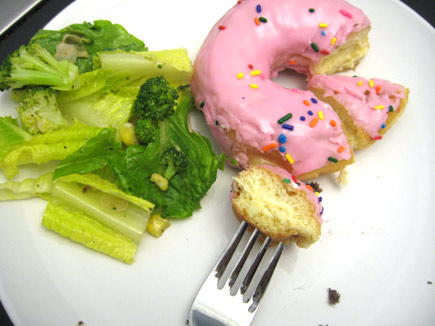
Five hundred and ten calories in a corn muffin at Dunkin' Donuts? One thousand one hundred and fifty calories in a Garden Omelet at IHOP? And 2,210 calories in a Bloomin' Onion appetizer at Outback Steakhouse?
"It's shocking," said Loreta Gemeviciute of Manhattan, who used to buy Starbucks' Venti Mocha Frappuccinos until she glanced at their 500-calorie stats. "I could eat a whole, good meal for that many calories."
Since calorie counts appeared on menus across the city, New Yorkers have feasted on the cornucopia of data. Some consumers can hardly believe their eyes.
And perhaps they shouldn't.
The rule that went into effect on March 31 requires restaurants with 15 or more franchises nation-wide to post calorie data on menus. Concerned about the city's obesity epidemic, the Board of Health reasoned that people might shun some foods in favor of healthier ones if they knew just how many calories lurked beneath a Big Mac's special sauce and sesame seed bun. But while mandating that calorie data be displayed, the law does not address many issues surrounding the accuracy of the counts. Many nutritionists laud the city's efforts to help New Yorkers eat better, but critics say the law was hastily crafted and will be impossible to enforce.
Meanwhile, consumers will need to realize that all calorie counts are not created equal. Calorie data on New York's menus are subject to far less scrutiny than the nutrition labels on products sold in grocery stores.
For one thing, the calorie content of meals made to order can vary significantly, even at restaurants with standardized preparation methods.
"That's the trouble with food - you can't really get it down to a science when it's made to order," said Marissa Lippert, a registered dietician in Manhattan. "At a mid-level restaurant, will every single chicken breast be three ounces? Probably not. That could make a big difference."
When food preparers toss in a little extra cheese or a little more oil, nutrition data can be thrown off by hundreds of calories. Just ask Quanisha Stackhouse, who works at Nathan's.
"My small fries look like medium fries and my medium fries look like large fries," she said. "I figure if they're paying $7 for a meal, people want to get their money's worth. I've got extra bacon in the salads, extra everything."
So when it comes to calories on the plate and calories on the menu, how close is close enough?
The federal regulation concerning calorie counts on food sold in stores requires the number on the label be within 20 percent of the food's actual content. The New York City law, however, does not specify a degree of precision.
"It's indeed a rather extensive loophole," said Chuck Hunt, executive vice president at the New York State Restaurant Association. The association has challenged the rule in court, claiming it conflicts with federal regulations and violates the commercial free speech rights of the food companies.
Proponents of the law argue that restaurant menus usually fall within the ballpark of accuracy. But lab analysis of calorie claims has shown that restaurants' nutrition totals can be wildly inaccurate, even in the case of major chains.
When the Center for Science in the Public Interest, an advocacy group for nutrition and health, independently tested Olive Garden's calorie claims, it found major discrepancies. The chain's cappellini pomodoro, posted as under 640 calories, had 990 calories, or 55 percent more calories than stated.
Similar discrepancies surfaced when ABC2 News investigated meals at Taco Bell, Macaroni Grill, Cheesecake Factory and other restaurants. Macaroni Grill's "Skinny Chicken" meal, posted as 500 calories, came out as 1022 calories, more than twice the stated calories. Most dishes tested in the ABC2 News experiment also showed significant inaccuracies.
Policing The Menu Boards

Under the new regulation, city restaurants will largely be taken at their word that the calorie totals they present are accurate. Unlike the federal Food and Drug Administration, the city has no system to police calorie labels.
"We will take appropriate action if we receive complaints; we haven't conducted any testing to date," said Jessica Scaperotti, press secretary for the city health department.
There is also no systematic testing to ensure that restaurants are not miscalculating - or misrepresenting - their data, according to the health department. In contrast, the FDA has complex procedures to test for accuracy under its food safety program.
"FDA inspections are risk based, meaning firms with a history of safety violations get inspected more than those that don't," said Michael Herndon, a spokesman for the agency. "And routine inspections are conducted."
Like the city, the FDA allows food manufacturers to compute their own calorie data, using lab analysis or other methods. But the FDA collects nutrition labels during routine inspections, performs lab analysis to check the listings for accuracy and reserves the power to recall a product from the shelves.
New York's law "is just not written as the FDA rule is written," said Sara Markt, deputy press secretary for the health department. Scaperotti added that the city may conduct testing if a restaurant's calorie data seems suspicious.
Calories on Trial
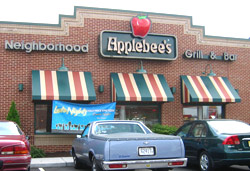
The city's new regulation could be food for lawsuits. Consumers who think a misleading calorie count constituted false advertising could take legal action against restaurants and the city. And since the rule does not set accuracy standards, it could feed disputes between restaurant owners and inspectors with differing interpretations of how precise the data must be.
"There are plaintiff lawyers just lurking in the shadows waiting to bring suits against restaurants for anything they do," said Hunt, who believes the city did not consider the possibility of lawsuits against restaurants when it crafted the law. "The thing about lawsuits is, no matter how absurd and ridiculous the claim is, you still have to defend yourself, and the legal fees are incredible," he added.
Lawsuits are already underway in Seattle against Applebee's and Chili's, for the calories counts on their menus. When a group of consumers was skeptical of the totals and had the meals tested in a lab, they found the food contained significantly more calories and fat than stated on the menus.
"If someone has a dietary or medical restriction, it's problematic and could have health effects," said David Breskin, a lead counsel on the case against these chains.
But since the New York City health department mandates and regulates the calorie information, the city could be at legal risk as well as its restaurants, according to Breskin. "There's a lot of interesting legal issues involved with that, one of which is whether there's a personal obligation owed by the city to a particular individual plaintiff," he said.
According to Breskin, cities are not usually liable to individuals, but some laws interpreted as creating a "special relationship" between individuals and the city open the door for citizens to sue municipal governments. He cited the example of homeowners who sometimes can sue building inspectors who inaccurately assess their properties.
Breskin added that mandatory disclaimers might help consumers understand that calorie counts can vary.
What's A Consumer To Do?
So should you simply ignore the calorie counts?
Not according to Lippert and other nutritionists, who see the new law as a useful step.
"There are a lot of benefits to the information that's being posted," she said. "If there's a sandwich listed as 400 calories and one that's 1,100, people can attempt to choose the lower-calorie item."
The city, though, suggests the total be used in a more precise manner. "Just 100 extra calories every day adds up to 10 pounds a year. Extra pounds can lead to obesity and diabetes, two major health problems on the rise in New York City, as well as heart disease," reads the city's compliance guide issued to restaurants.
Calorie counts off by more than 100 calories already have some consumers baffled. A photo of two Dunkin Donuts franchises showed one posting a chocolate glazed doughnut with 80 calories, while another listed it with 340 calories (sorry, doughnut lovers - it's the latter).
And when Sheryl Imperati , who blogs about the diet that has allowed her to drop from 196 to 146 pounds, saw that Starbuck's peach apple tart had just 120 calories, she thought she'd discovered every dieter's dream. "I almost don't even believe it," she wrote at the time.
Imperati encouraged readers to try the product. "I've been enjoying this fantastic NEW breakfast all week," she wrote.
But Imperati lost the weight by carefully monitoring her meals, and she has learned a thing or two about nutrition. Breaking out a kitchen scale and a calculator, she determined the peach apple tarts that seemed too good to be true were just that.
When Starbucks eventually updated calorie information on the item, the calorie total more than doubled, weighing in at 280 calories.
"I'm surprised New York City hadn't factored in some sort of verification process for the nutritional content that would be posted as a result of the new regulation," Imperati said. "Until there is some accountability, consumers will need to carefully consider the information that is presented to them."
Â
Can Planners Help New Yorkers Eat Better?
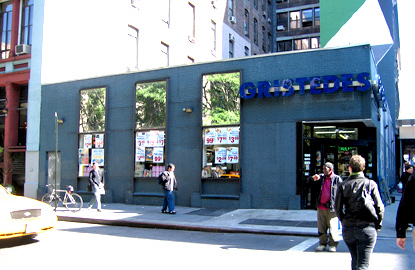
On retail strips all over the city, skyrocketing rents are forcing food retailers out. Instead of groceries, boutiques, banks and drug chains have set up shop.
This alarming decline in supermarkets has reduced options for healthy nutritional choices, a recent New York Times article warned. In place of grocery stores, consumers often have to rely on fast food outlets that offer few healthy choices, or other retail outlets like chain-operated drug stores that sell a limited stock of packaged foods.
Facing high rates of diabetes and obesity in low-income neighborhoods, the Department of City Planning has offered proposals to stem the decline in food stores. The city's health department has already recommended measures such as pushcarts for produce, aid to small grocers, and requirements that fast food outlets post calorie information. But can the city's land use planning agency help reverse the trend and expand food choices to consumers?
The Grocery Gap
The Department of City Planning has now taken up the challenge posed by one of the city's most intractable health crises, which has produced a diabetes and obesity epidemic. An estimated 700,000 New Yorkers suffer from diabetes, and childhood obesity rates are alarming, with 23 percent of black and 31 percent of Hispanic elementary school children estimated as obese.
The City Planning food store study, done in cooperation with the health department and Economic Development Corp., shows that 57 out of 59 community districts in the city fail to meet the department's standard of 30,000 square feet of food retail space per 10,000 population. The planners developed a Supermarket Need Index and, using it, found that the pattern of need is clearly concentrated in northern Manhattan, the south Bronx, and central Brooklyn. These neighborhoods have a total population of 3 million, almost 40 percent of the city's people. The study cites the public benefits that supermarkets bring to neighborhoods as well as barriers confronting food retailers.
Zoning for Retail
In light of the magnitude of the problem, the recommendations in the study appear a bit anemic, failing to take an in-depth look at the many ways land use planning can make a difference. For example, the report calls for removing the limit of 10,000 square feet for food retailers in light manufacturing districts. City Planning, though, proposed this in the 1990s only to see it defeated in the face of widespread concern that the measure would lead to a rush of big box stores and threaten the viability of industrial areas. After the department's recent spate of rezonings throughout the city, there is less industrially zoned land near residential neighborhoods than there was then, but still no guarantee that rezoning them would bring anything but big boxes and condominiums.
The study proposes including retailing opportunities in future rezoning efforts. Simply rezoning an area for retail, though, does not mean that the stores will come. The study also endorses a proposal by the Economic Development Corp. to use city-owned land to promote new retail uses and backs the work of the Mayor's Food Policy Task Force. However the report does not propose new and perhaps more promising strategies that city planners are using in many other cities.
However, urban planners have found that the real solutions have to be crafted at the neighborhood level, and not just city-wide. Also, supermarkets are not the only solution to the problems of food access. And commercial retailing on any scale can be a part of the problem if retailers fail to carry healthy choices.
Community organizations and advocates of healthy food are already creating alternatives to the flagging supermarket sector, all of which could be supported by the city's land use and zoning policies. In the last year alone, new food cooperatives have sprung up in the south Bronx and central Brooklyn. Green markets and community gardens provide fresh produce. Community-assisted agriculture - where residents arrange with producers to get fresh farm products - is growing (according to Just Food there are more than 40 such projects in the city). And some non-profit food kitchens partner with community gardens and local producers.
All of these efforts are on a relatively small scale, but city policy can support them and bring them up to a scale so they can have a greater impact on the food crisis. This, though, would require some aggressive community-based and citywide land use planning.
In other cities, schools set aside small plots of land for growing vegetables and herbs. The amounts produced are minimal, but the gardens are a powerful tool for educating kids about food and nutrition. While New York City is opening up schoolyards for recreation, an initiative spurred by the mayor's long-range sustainability plan, some land could also be used for food production. This also would open up opportunities to introduce composting and other ecological practices to students, teachers and administrators.
It's Not Just Numbers
The Department of City Planning's approach to food access looks only at the quantitative part of a strategy that has to include both quantity and quality. Increasing the amount of land available for retail space and supermarkets is only a part of the solution. More - and larger -- retail space in no way guarantees that food will be more accessible to those who need it the most, especially if retail rents are so high that only gourmet stores will survive. While supermarkets may offer more choices, they too can become high-end boutiques. Unless the strategy of opening up more land is accompanied by one that increases the demand for and access to low-cost healthy food, all the stores in the universe won't solve the problem.
Any policy must also insure long-term access. Unless it can be sustained through periods of real estate peaks and troughs, we will not have community food security - an internationally recognized concept used to plan for food that, if incorporated into New York City's food and land use policies, would help overcome the epidemics of diabetes and obesity.
There is one regulatory measure the city (and state) could use to stop the rising rate of decline in food retailing space in neighborhoods - commercial rent control. It is the perpetual bane of the city's powerful real estate industry, but is probably the only thing that will work to stem the loss of neighborhood retailers. It would allow the city to stabilize local retail strips where local stores are being pushed out in favor of chains that improve neither the range of consumer choice nor access to healthy products.
Tom Angotti is Professor of Urban Affairs and Planning at Hunter College, City University of NY, editor of Progressive Planning Magazine, and a member of the Task Force on Community-based Planning.Â


